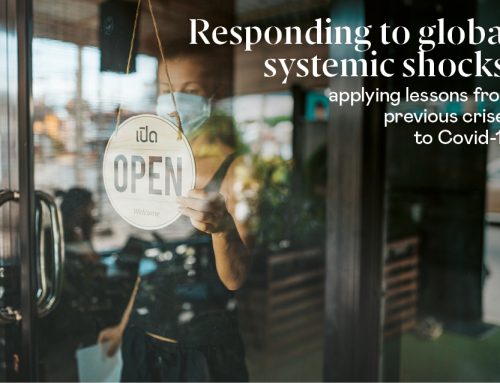Neuromarketing? Better talk about Brain-Pleasing Marketing

It was many years ago, in the early 2000s, that the first instance of ‘neuromarketing’ popped up as a search term on Google… and as they say: “the rest is history”. In fact, since then, general interest in the subject has mushroomed so much that the original meaning of the word ‘neuromarketing’ now runs the risk of being misinterpreted, misused and the source of much confusion.
So what is neuromarketing really about?
In the simplest terms, neuromarketing is based on the notion that one can improve the efficacy of marketing by using the principles of neuroscience.
In the market economy, customers – both private as well as business customers – have an inalienable right: they have the freedom to choose a brand, a service, a service provider, a shop, etc. Based on this fact, the role of marketing is to make customers choose repeatedly what the brand sells, and, as a result, make a profit.[1]
Neuromarketing is a very effective way of achieving this. Knowing how the brain works helps understand how people make decisions , create preference and experience positive sentiments towards something.
The History of Neuromarketing
Neuromarketing began as an ideal market research tool to understand better how consumers interact with stimuli (ads, packaging, web or app designs, visual merchandising, etc.).
Previously, most theories on human behaviour had been underpinned by the premise that human decisions and actions are based on conscious reasoning. However, science (I underline ‘science’, not simple statistical probabilities) proves that the vast majority of people’s decisions are made non-consciously or implicitly.
This means asking customers directly about their purchase reasons, motivations and intentions isn’t only little practical, but – even worse – it can lead to confusing or incorrect results.
Can you imagine that you were asked why you love a certain person, and then you were given a set of possible responses to choose from? How could you possibly verbalise the non-conscious emotions and motives behind your sentiment of love?
Yet, despite this, it is surprising to see how so many market research studies are still being conducted under the traditional assumption that most of our purchase decisions are made consciously (also called ‘rational’). Fortunately, in recent years, things have been changing in the marketing research field.
Main methods in neuro-based marketing research
From an operational perspective, neuromarketing has been used widely for research purposes, substituting or complementing the traditional methods like surveys, observation, focus groups, etc.
Some of the most used are eye-tracking, the identification of emotions reflected on the face (facial coding), galvanic skin response measuring, and brain activity monitoring through electroencephalography (EEG).

These ‘neuromarketing’ techniques, which are in fact ‘neuromarketing research’ methods, are used for detecting and measuring the non-conscious processes in humans.
This type of marketing studies are scientifically based on the fact that certain stimuli(for example, an advertisement) captured by the human senses (sight, hearing, touch…) instantly activate certain emotions which are reflected in the human body (for example, changes in heart rate, sweating, facial muscles, brain activity, etc.).
By observing and measuring changes that the body experiences under the influence of some stimuli, the neuromarketing technologies try to reveal the emotional impact the person feels for that stimulus.
The large majority of the aforementioned methods are strongly focused on helping managers make positive operational decisions: to improve the user experience of an app, a new packaging design, an exhibition design, etc.
Nevertheless, in these cases, the company is testing some already existing material, for example, trying to find the best out of three packaging options. Most likely, the packaging prototypes have been created by using some other criteria that don’t result from this type of neuro-techniques.
Another angle: neuroscience for devising Brain-Pleasing Marketing
Neuroscience can also be applied in a more strategic way. Now that we know the stages in customer journey when purchasing, using and creating habits, we can take marketing to higher orbits. This doesn’t mean finding out (via trial and error) which stimulus is ‘brain-friendly’, but to start conceptualising in the first place something that will please the brain.
Instead of ‘neuromarketing’ (neuro-market research techniques), it is about ‘Brain-Pleasing Marketing’.
Brain-Pleasing Marketing is most commonly used when:
- Devising innovative marketing or retail concepts.
- Defining a meaning for a new brand or redefine that of an existing brand.
- Shaping a new purchasing experience, by re-engineering the customer journey (including almost always the digital part, of course).
- Sometimes some company has used it even to attract competent candidates in the talent market.
Brain-Pleasing Marketing isn’t only about creating a ‘wow’ effect by presenting stimuli that create emotions. An emotion can be strong, but it lasts only for a moment (usually just for few seconds). Brain-Pleasing Marketing affords the opportunity to devise a positive sentiment towards a brand, which is longer-lasting than an emotion and works on a non-conscious level, going beyond the reasons for preferring a brand.
Creating a (positive) sentiment is harder than creating an emotion. Above all, it takes much more time.Yet, once created, it is strongly stored in one’s mind. It creates a strong connection towards the brand and make the person feel: ‘this is my brand’.
Ultimately, the core aim of any branded product – in any industry – is to become part of customers’ lives. It is a relationship that goes beyond one-dimensional and rational propositions such as competitive advantages, quality, price, service, value proposition, etc.
I am most passionate about Brain-Pleasing Marketing because it is used for devising (usually innovative) future strategies. We have yet to see the full potential of neuroscience in marketing, and yet the results are astounding. This type of latest-generation marketing has proved its effectivity in challenges from many different sectors where I had the privilege to act as a team catalyst. The usual outcome is a sales growth in double digits.
Yet, there is something else that gives me inner peace. This marketing based on the non-consciousness respects the customers’ freedom of choice. I confirm that the ‘buying button’, that key which you can press and make customers buy like robots, does not exist. Obviously, ethics are not at risk with Brain-Pleasing Marketing.
[1]I share this approach with Prof. Rajendra Srivastava (Indian School of Business).
Luis Martínez Ribes (Lic&MBA 76)
Associate Professor, Department of Marketing in ESADE

Bibliography:
Kanheman, D. (2013) Thinking, fast and slow, Farrar, Straus and Giroux Edit.
Ramsøy, Th. Z. (2014)Introduction to Neuromarketing and Consumer Neuroscience, Neurons Inc ApS





